| Many museums are closed
on Mondays and public holidays so we had to wait until Tuesday. This was a
rare time when Jan and I went our separate ways: she went to a quilt museum
which had just moved to a new building on the University of Nebraska campus.
The art outside seems to represent the random quilting lines used in many
quilts - but I could be wrong. | 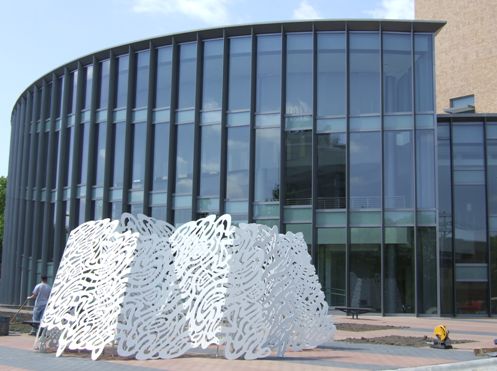 |
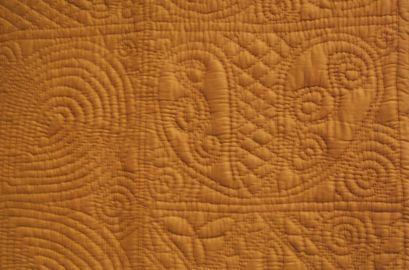 |
Unfortunately, but not unexpectedly, photography is not permitted. The
museum has a policy of themed displays so, rather disappointingly, most of
the quilts are not on display. However the whole collection has been
photographed and can be seen 'virtually' by using the museum's computers. |
| I wandered deeper into
University territory past this collection of dishes. Two of the largest are
for PBS (Public Broadcasting Service) and Ag-Comm. They are a reminder of
the fact that most of the public broadcasting in the US is managed and
transmitted by the universities. |  |
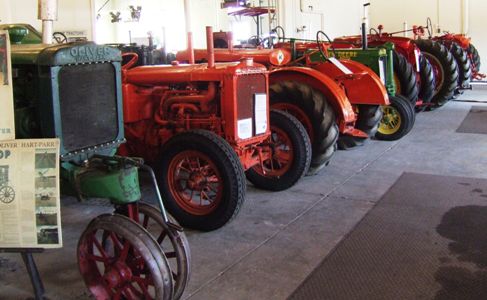 |
I was headed for the Larsen Tractor Testing Laboratory and Museum,
home of the only tractor performance certification centre in the US. Testing
started in the US in 1919 after W F Crozier, a Nebraska congressman, bought
a tractor which did not live up to the salesman's promises. |
| The collection contains
more than just tractors, starting with horse and oxen drawn implements. This
is the famous plough which started John Deere on the road to fame and
success. | 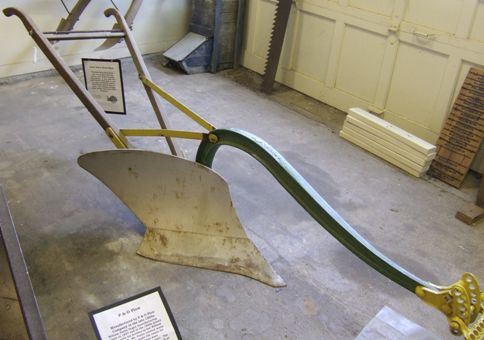 |
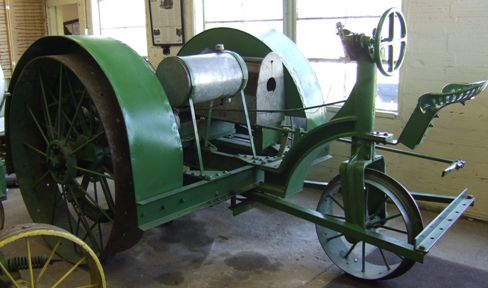 |
This is the tractor that started it all. Needless to say, the company long
since went out of business. It is a 1909 Ford 8-16hp tractor. The company
hoped to capitalise on the Ford name by employing someone called Ford. The
Ford company brought out its first tractors under the name Fordson in 1918. |
| There are some
interesting items of equipment but here the tractor is of more interest. It
was one of the first to have a three point linkage enabling equipment to be
added. | 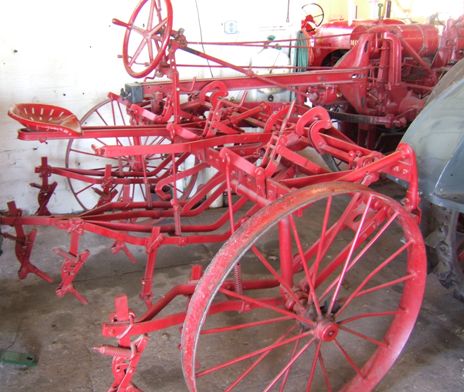 |
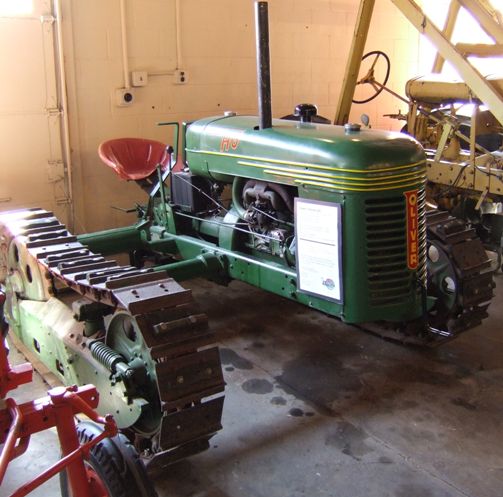 |
There are three and four wheel tractors with every conceivable size of wheel
and tyre and even some with tracks. These were much favoured on softer land
since they did not sink in so easily. |
| This tractor looks odd
because the engine is actually mounted behind the main wheels giving the
driver a much better view of the crops he was tilling. | 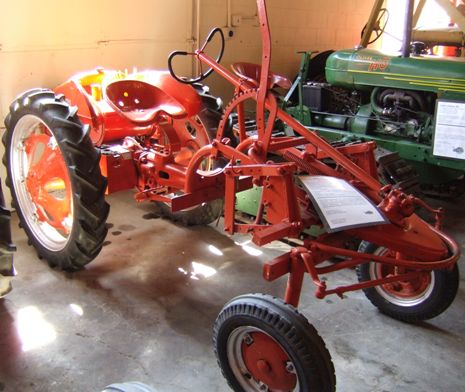 |
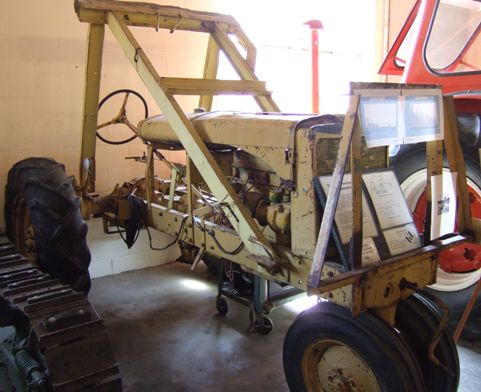 |
This is a tractor test and demonstration rig used for work on tractor
rollover experiments. Tractors overturning was once a major cause of deaths
in the farming community. |
| Another way of coping
with soft and wet soils was the unusual wheels fitted to this tractor. The
twin wheel arrangement at the front was very common between the wars. | 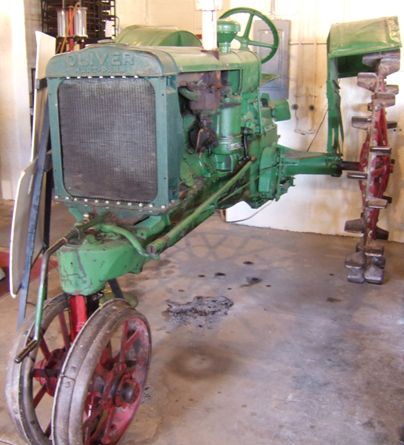 |
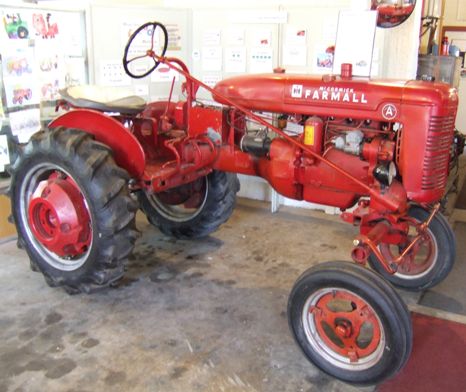 |
The Farmall tractor was once the commonest tractor in the west. |
| This model T pickup is
also on display. It was used between 1925 and 1936 by a university geology
student on his field trips. | 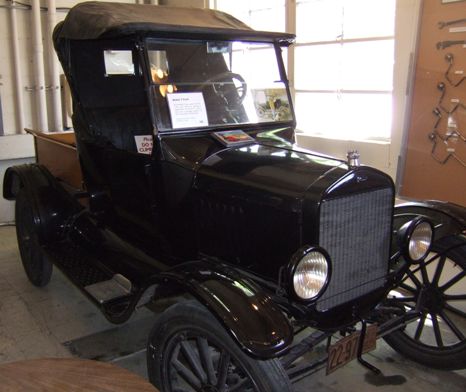 |
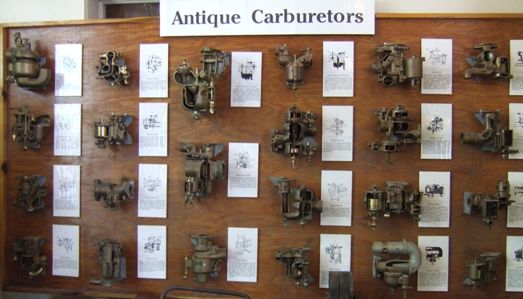 |
I'm not sure that they were all used on tractors but it is remarkable that
there should have been so many variants of such a complex part of the engine. |
| Just as an aside there is
a mention of the Kansas barbed wire museum and a small collection of barbed
wire. We went near that museum in 2005 but didn't visit. We feel we probably
should have done. | 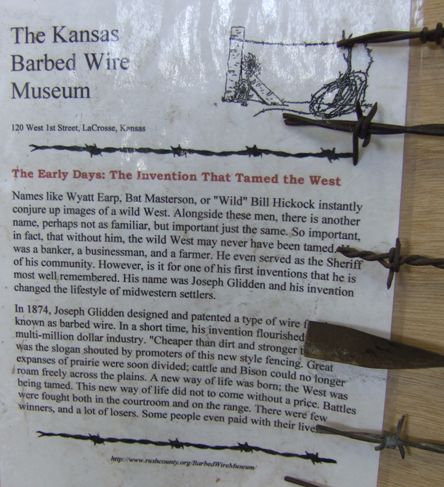 |
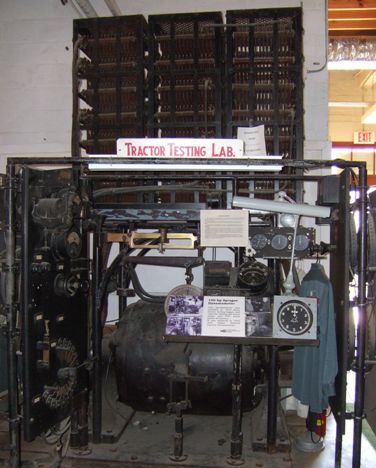 |
The early test dynamometer used to measure the power output of the tractor.
Fuel consumption was measured at the same time by weighing the remaining
fuel every few minutes. |
| The tractors in the
museum are mostly less than 20hp and they stopped collecting before diesel
engines came into common use. These are three modern 500hp tractors waiting
to be tested in the coming week | 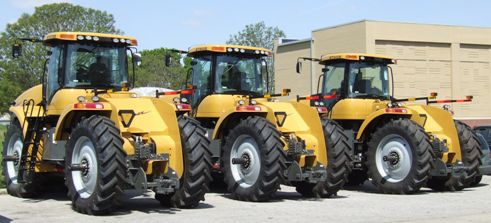 |
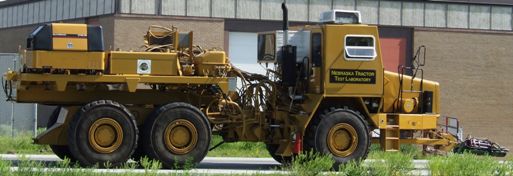 |
And the modern test dynamometer car was standing on the oval track at the
back - sadly they weren't testing outside today. |
An interesting point came up while talking to the docents in the museum: as a
result of research at the university, many farmers in Iowa and Nebraska no
longer plough their fields but merely harrow them with the stubble still
present, and then sow the seed followed by chemical sprays to control weeds.
Thus they use heavy equipment on the fields only three times (the last being to
harvest). This apparently works very well and leads to less erosion and
compaction of the soil and better drainage and water management, important
features with water usage becoming more critical and fuel costs rising
exponentially. Big tractors can use 1000 gals of diesel per day. |